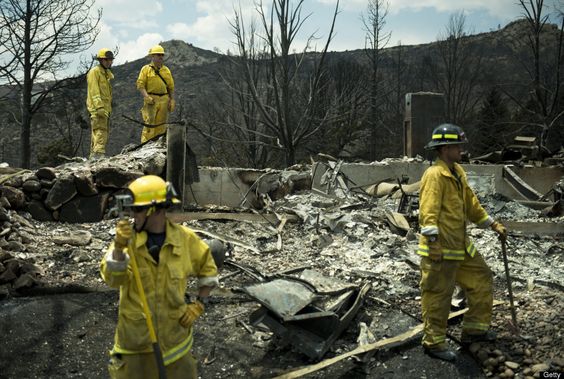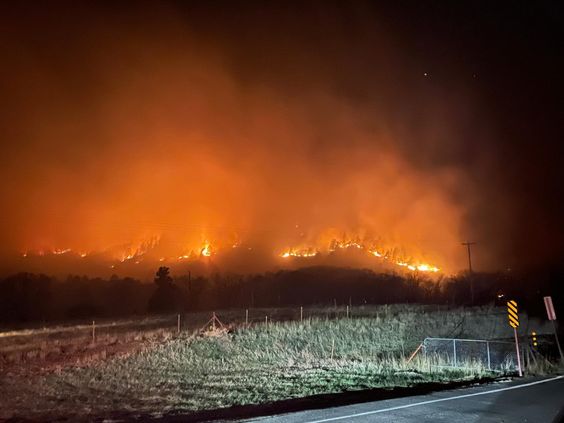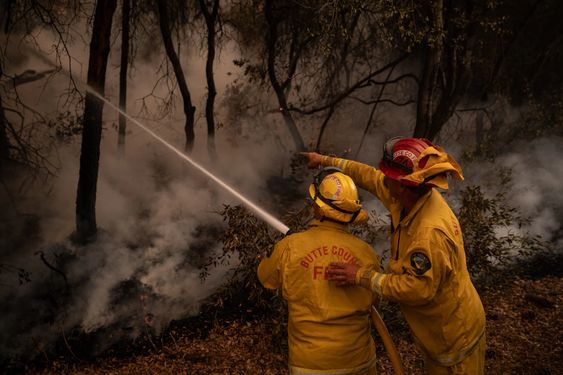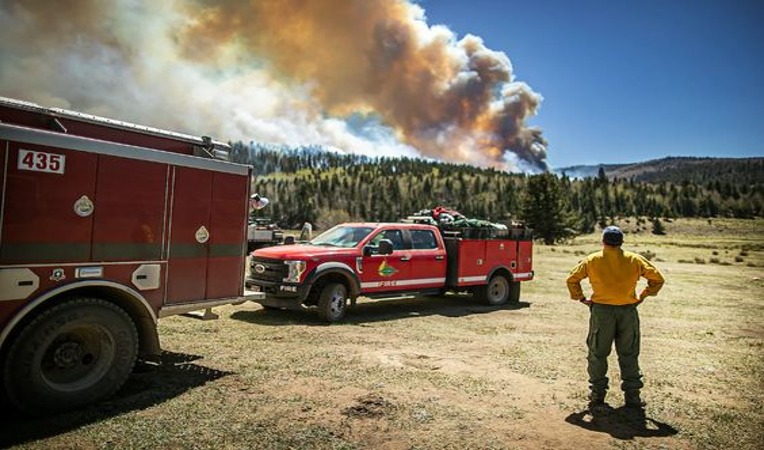The devastating Calf Canyon-Hermits Peak Fire not only caused destruction to homes and landscapes, but it also had severe environmental consequences. Have you ever wondered about the long-term effects of such fires on the ecosystem?
Wildfires have become more frequent and intense in recent years, posing a significant threat to our environment. The Calf Canyon-Hermits Peak Fire, which engulfed large areas of land, is a prime example of the devastating impact these fires can have.
Understanding the environmental consequences of wildfires is crucial for developing effective strategies to mitigate their effects. In the case of the Calf Canyon-Hermits Peak Fire, the fire’s aftermath has led to significant ecological changes that continue to affect the region. In this article, we will explore the various ways in which the fire has impacted the environment and discuss the importance of addressing these consequences for the sake of our planet’s future.
What is the Burning Man in New Mexico?

Burning Man is not specifically located in New Mexico; it is an annual event that takes place in the Black Rock Desert of Nevada, USA. Participants, often referred to as “Burners,” gather to create a temporary city called Black Rock City.
The main focus of Burning Man is the burning of a large wooden sculpture, known as “The Man,” which usually occurs on the penultimate night of the event. The festival promotes principles such as radical self-expression, communal effort, civic responsibility, and leaving no trace, among others.
It’s possible that there are regional Burning Man events or inspired gatherings in different locations, including New Mexico, but the main and most well-known Burning Man event takes place in Nevada.
What was the worst fire in New Mexico history?

The worst fire in New Mexico’s history was the Calf Canyon-Hermits Peak fire, which ravaged the northern part of the state in 1951. This devastating wildfire started on April 25th and quickly spread across more than 100,000 acres of land near Las Vegas, New Mexico. Fueled by strong winds and dry conditions, the fire burned for several weeks, causing extensive damage to forests, wildlife habitats, and human settlements. It was a tragic event that left a lasting impact on the local communities and ecosystems.
The Calf Canyon-Hermits Peak fire had a profound effect on the region’s environment and economy. The loss of valuable timber resources and agricultural lands caused significant hardship for many residents who relied on these natural assets for their livelihoods. Additionally, the destruction of wildlife habitats led to long-term ecological consequences, impacting various species of flora and fauna in the area. The aftermath of this catastrophic fire spurred efforts to improve forest management practices and enhance wildfire prevention measures in New Mexico. Despite its devastating impact, this historic fire serves as a reminder of the importance of proactive measures to protect our natural landscapes from future disasters.
What caused the Calf Canyon fire in New Mexico?

The Calf Canyon fire in New Mexico, also known as the Hermits Peak fire, was caused by a combination of natural and human factors. The dry and windy conditions in the area contributed to the rapid spread of the fire, while the presence of dead vegetation and low humidity levels provided ample fuel for it to grow. Additionally, a lightning strike is believed to have ignited the initial flames, highlighting the powerful impact that natural phenomena can have on sparking wildfires in such vulnerable environments.
Human activity also played a role in exacerbating the situation. Reports indicate that careless campers may have failed to properly extinguish their campfire or disposed of cigarette butts irresponsibly, leading to potential ignition sources within a highly flammable environment. This demonstrates how human actions can inadvertently contribute to devastating consequences for nature and local communities alike. Overall, it’s clear that a combination of environmental conditions and human behavior were responsible for igniting and sustaining the Calf Canyon fire in New Mexico. Understanding these causes is crucial for implementing effective prevention measures and ensuring better protection against future wildfire incidents.
Why are there so many fires in Mexico?
The prevalence of fires in Mexico can be attributed to a combination of natural and human factors. One significant factor is the country’s climate, characterized by dry and hot conditions, especially during the summer months. These conditions create an environment conducive to the ignition and spread of fires, particularly in regions with dense vegetation and limited rainfall. Human activities also play a pivotal role in the high incidence of fires in Mexico as agricultural practices, land clearing, and inadequate fire management contribute to the risk of wildfires.
The Calf Canyon-Hermits Peak fire exemplifies the impact of these factors. This wildfire originated from a lightning strike in a remote area near Las Vegas, New Mexico, but quickly grew due to dry fuel and challenging terrain. The rugged landscape made it difficult for firefighters to contain the blaze while strong winds further fueled its expansion. Additionally, human encroachment into wildland areas has increased the likelihood of such fires as development brings people closer to potentially hazardous environments.
Efforts are being made to address this issue through improved fire prevention measures, public awareness campaigns about responsible land management practices, and stricter regulations on controlled burning activities. However, addressing the root causes of wildfires will require a multifaceted approach that balances environmental conservation with sustainable development while taking into account both natural and human influences on fire occurrence in Mexico.
Who started the wildfire in New Mexico?
The wildfire that ravaged through New Mexico and devastated the landscape was a tragic event that shook the community to its core. The Calf Canyon-Hermits Peak fire, as it came to be known, was a devastating force of nature that sparked widespread concern and fear. As rumors swirled and speculation ran rampant, the question on everyone’s mind was: who started this destructive blaze?
Investigators worked tirelessly to uncover the truth behind the wildfire’s origin, combing through evidence and interviewing witnesses in their quest for answers. This revelation sent shockwaves through the community, as people grappled with feelings of anger and betrayal at the hands of someone whose thoughtless actions had led to such catastrophic consequences.
The aftermath of this tragedy served as a stark reminder of the importance of responsible behavior in natural settings, prompting discussions about how we can better protect our environment from preventable disasters. The Calf Canyon-Hermits Peak fire left an indelible mark on New Mexico, serving as a cautionary tale about the far-reaching impact of one person’s heedless actions on an entire community and ecosystem.
Did Mora New Mexico burn?
In the summer of 2018, a devastating fire swept through the area surrounding Mora, New Mexico, leaving a trail of destruction in its wake. The Calf Canyon-Hermit’s Peak Fire raged for several weeks, consuming thousands of acres of pristine wilderness and threatening the homes and livelihoods of local residents. As I watched the plumes of smoke billowing on the horizon, my heart sank with the realization that this beautiful landscape was under siege.
The fire sparked a sense of unease and concern within me as I grappled with the thought that such a beloved place could be at risk. The rugged terrain and towering cliffs that had always been a source of solace for me were now engulfed in flames, leaving behind charred remnants and desolation. It was a stark reminder of nature’s raw power and unpredictability, but it also ignited a deep sense of community spirit as people rallied together to support one another during this challenging time. Despite the devastation, there was hope in knowing that Mora would rise from the ashes, stronger and more resilient than ever before. The fire may have left scars on the land, but it also brought people closer together in their determination to rebuild and protect their cherished home.
Conclusions
The Calf Canyon-Hermits Peak Fire has had devastating environmental consequences, impacting the local ecosystem and wildlife. The fire has led to widespread destruction of plant life and habitat, posing a significant threat to the biodiversity of the area. Additionally, the release of carbon dioxide and other greenhouse gases from the burning vegetation has contributed to air pollution and climate change. It is crucial for policymakers, land managers, and communities to work together in addressing these issues and finding sustainable solutions for a healthier environment.




